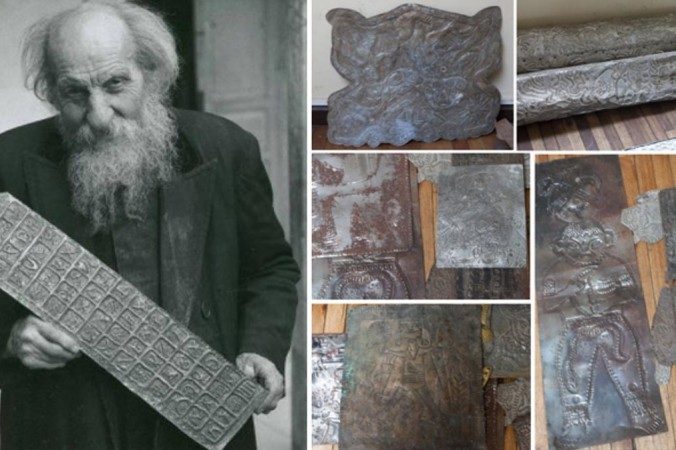
But how much of the story is true? Ancient Origins set out to find the answers and was given exclusive access by the Central Bank of Ecuador to the private artifact collection of Crespi, tucked away in hidden vaults and storerooms, including the controversial carved metal plates, which had not been seen or photographed for decades.
Google the name "Crespi" today and you will find dozens of websites telling the bizarre story of a humble priest in Ecuador and his connection with a mysterious collection of artifacts. When myself and Dr. Ioannis Syrigos of Ancient Origins moved to Cuenca, Ecuador, and were visited by researchers Hugh Newman, founder of Megalithomania.co.uk; and Jim Vieira, who has starred on several History Channel programs, we had an opportunity to explore the account in more depth and find out what is really behind the story of Crespi.
The Man Behind the Mystery
Crespi was a Salesian monk who was born in Italy in 1891. He studied anthropology at the University of Milan before becoming a priest. In 1923, he was assigned to the small Andean city of Cuenca in Ecuador to work among the indigenous people. It was here that he devoted 59 years of his life to charitable work until his death in 1982.
Crespi is known for his multitude of talents; he was an educator, anthropologist, botanist, artist, explorer, cinematographer, and musician. He was also known for his intense humanitarian efforts in Ecuador; he set up an orphanage and educational facilities, assisted the impoverished, gave food and money handouts, and cared deeply for the people.
Walking around the city of Cuenca, it is clear that Crespi won the hearts of the people—today a statue of him helping a young child remains in the square in front of the church of Maria Auxiliadora, and local people old enough to have known him share stories about his charitable efforts. The city of Cuenca has been working with the Vatican for years to have Crespi recognized as a saint.
However, it was not only the people of Cuenca that he helped. Crespi also had a deep personal interest in the numerous tribes of indigenous people throughout Ecuador and sought to learn about their culture and traditions, as well as to offer assistance whenever possible.
People speak of his dedication to a life of voluntary poverty; he sometimes slept on the floors of small huts belonging to indigenous people, with only a single blanket.
The clip below was filmed by Crespi in 1927 and is the first film of Shuar community life and culture ever made.
The Crespi Collection
It was due to the Crespi's dedication to the people that they began to bring him artifacts as offers of thanks. These artifacts came from all corners of the country and beyond, and were representative of the works of almost all the indigenous cultures of Ecuador.
Other objects, including numerous metallic carved plates, were thought to be modern-day carvings or replicas of ancient artifacts, though Crespi always showed great gratitude no matter the value of the gift. Not wanting to shame impoverished families by giving them money handouts for nothing, Crespi began to pay some of the people for the objects they brought him.
Philip Coppens, a Belgian author and radio host who has researched Crespi's life, explained:
"When poor people brought him these plates or other artifacts that the local people knew he collected, he made sure they were rewarded for their efforts. He knew several local families were poor but that pride prevented them from asking for money, unless it was as payment for something. And hence, more and more metal plates found their way to the priest. Some, Crespi was sure, were fakes—and they were often the crudest executed."Over time, Crespi acquired more than 50,000 objects, many of which were kept in the courtyard of the church Maria Auxiliadora until the Vatican gave him permission to start a museum to house the collection.
Unfortunately, many of the artifacts were destroyed in a fire in 1962. After Crespi passed away, the remaining artifacts were removed and little trace of them remained.
Various claims emerged as to what happened to the artifacts that survived the fire—some say they were stored in the cellar archive of Maria Auxiliadora, others say they were sold to private collectors, or that they were shipped off to the Vatican. For decades, little was known of Crespi's artifacts.
'Gold of the Gods'
While thousands of Crespi's artifacts are unremarkable in that they can be clearly classified according to their age and the indigenous culture to which they belong, there remained a small subset of items that sparked intense controversy.
Some of the artifacts are Babylonian in style, others appear to have been carved in gold with strange motifs and symbols that do not resemble objects from any South American culture. Some of the gold plates appear to show a type of ancient writing, although as far as we are aware, none of them were identified and translated.
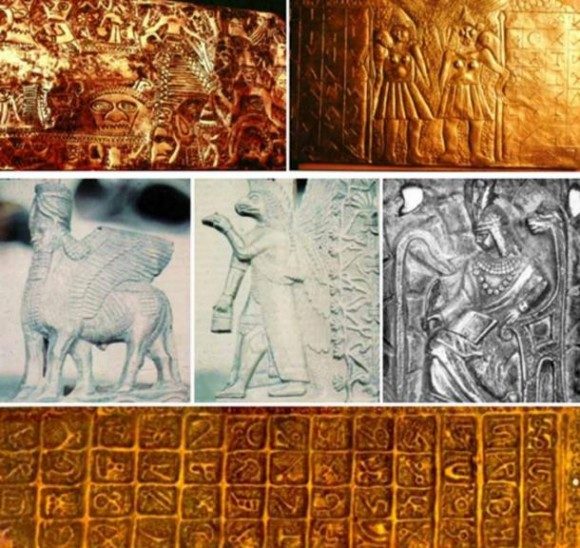
Wingate's comments are recounted by Glen W. Chapman, a physicist and Mormon apologist who took an interest in the Crespi artifacts and compiled information on them: "In a dusty, cramped shed on the side porch of the Church of Maria Auxiliadora in Cuenca, Ecuador, lies the most valuable archaeological treasure on Earth. More than one million dollars' worth of dazzling gold is cached here, and much silver, yet the hard money value of this forgotten hoard is not its principal worth.
"There are ancient artifacts identified as Assyrian, Egyptian, Chinese, and African so perfect in workmanship and beauty that any museum director would regard them as first-class acquisitions. Since this treasure is the strangest collection of ancient archaeological objects in existence, its value lies in the historical questions it poses, and demands answers to.A video showing Crespi with the more controversial artifacts can be viewed below. Crespi himself believed that these artifacts did not come from Ecuador, but from Babylon.
Yet it is unknown to historians and deliberately neglected in the journals of orthodox archaeology".
In 1973, Swiss "ancient astronaut" theorist Eric von Däniken published his sensational book Gold of the Gods, claiming that Juan Moricz, an aristocratic Argentinian-Hungarian entrepreneur, discovered a series of tunnels in the Tayos Caves of Ecuador that contained a "Metal Library" and numerous golden artifacts. Däniken said it was these objects that were given to Crespi, forming the controversial part of his collection.
Furthermore, Däniken claimed the artifacts had been created by a lost civilization with help from extraterrestrial beings. Father Crespi and the story of his artifacts shot to fame.
Searching for the Truth
To unravel the facts behind the missing artifacts, our first stop was the Maria Auxiliadora church, where Crespi spent much of his life. We were welcomed by the acting priest, Padre Javier Herrán, also Rector of the Universidad Politécnica Salesiana in Cuenca.
Herrán had known Father Crespi personally and was able to tell us about his life and dedication to the people of Ecuador. He insisted that none of Crespi's artifacts had remained at Maria Auxiliadora after the fire, but were instead purchased by the Central Bank of Ecuador.
He set up a meeting for us with Dr. Luis Alvarez, editor general of the Universidad Politécnica Salesiana, who could tell us more.
Alvarez is an expert on Crespi and took us to a small museum on the university grounds that contains some of Crespi's personal possessions. He told us that Crespi's collection was accumulated as a result of his generous work for the people of Ecuador and that Däniken's account was entirely false.
According to Alvarez, Crespi himself was shocked when he heard claims about the Tayos Caves and stories of lost civilizations and extraterrestrials. Dr Alvarez was very keen to separate Father Crespi from what he said were sensational stories and mistaken facts, and told us he could take us himself to see the collection—we were thrilled!
The collection had not been seen or photographed for decades and now we would have the chance to see it for ourselves. Alvarez made arrangements for the Central Bank of Ecuador to open up its private museum collection to us.
He gathered a team of experts, including archaeologists, anthropologists, and even police escorts to take us through the storage rooms containing Crespi's precious collection.
Rows upon rows containing thousands of artifacts awaited us. They had been carefully catalogued according to their age and the culture they belonged to—figurines, ceremonial seats, weapons, stone carvings, ceramics, jewelry, ancient calculation systems, religious icons, and even elongated skulls and shrunken human heads formed part of Crespi's impressive collection, but no metallic plates.
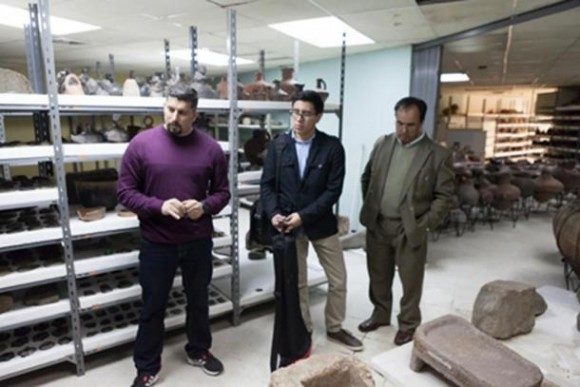
When we enquired about the metallic plates, we were told they were simply considered junk and that the Central Bank refused to purchase them because they were proven to be fake.
We wanted to see for ourselves.
Alvarez arranged for a police escort to take us to the metallic plates. They were located at the opposite end of the building complex in a locked storage area of a dilapidated old building.
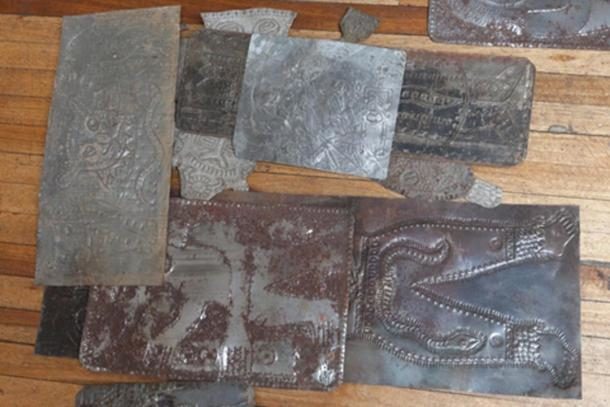
The metallic plates were clearly not made of gold but a soft and pliable metal that more closely resembled aluminium. The carvings were crude and in some cases infantile. It is true that many of them contained unusual figurines and bizarre scenes, but they did not resemble anything other than modern-day carvings in cheap metal sheets.
Was this really the Metallic Library that Däniken had sensationally written about in "Gold of the Gods"?
Warnings Not to Investigate Further
Our investigation enabled us to verify the following facts:
- Crespi's collection is not missing but was purchased by the Central Bank of Ecuador and is currently stored in its museum vaults.
- The majority of Crespi's collection consists of authentic and valuable artifacts gathered from around Ecuador.
- The so-called Metallic Library mentioned by Däniken may be nothing more than modern-day carvings on cheap metal.
No one at the Universidad Politécnica Salesiana, Church of Maria Auxiliadora, or the Central Bank Museum were able to answer these questions.
Our continued explorations resulted in threats and a warning to stop pursuing further investigations into the missing artifacts.
Syrigos arranged an appointment with Alvarez on March 30 to clarify a few missing pieces to the Crespi puzzle for a video Ancient Origin's is preparing about Father Crespi's life.
The missing pieces of the puzzle are, of course, the golden artifacts depicting hieroglpyhs and Sumerian figures, the ones that Crespi presents and supports in his videos with Stanley Hall and the ones that Professor Barry Fell of Harvard University identified as original. Some of these artifacts can be seen in the video below.
The missing artifacts consist not only of metallic (golden) tablets, but also clay and stone artifacts with unusual carvings, none of which were among the thousands of artifacts that we viewed in his collection held by the Central Bank of Ecuador.
Some of the artifacts were accepted by Crespi as original and authentic, while others he acknowledged as fake. As a highly educated man—a scientist, educator, anthropologist, botanist, artist, explorer, cinematographer, humanitarian, and musician—Crespi was in a relatively good position to assess the authenticity of the artifacts.
The University Withholds Information on Crespi's Artifacts
After our arrival at the University, we met with Alvarez, who as always was friendly and welcoming, eager to help us complete our research and the video about Father Crespi.
We explained the importance of having all the facts around Crespi clear in the video, otherwise the video would be incomplete. However, any reference to the missing artifacts seemed to make Alvarez uncomfortable.
Initially, it seemed that this was because he preferred that we focus on the other aspects of Crespi's life that he deemed more important than the artifacts—his charitable endeavours. However, later it appeared that there were other reasons he was uncomfortable discussing the artifacts.
The official response of Alvarez was that these artifacts simply went missing, never to be found again. His assistant kindly clarified that two years before Crespi's death, all items in his collection were recorded apart from the missing artifacts, which according to her, were already gone by then.
While initially Alvarez said he knew nothing about the location of the missing artifacts, later on he contradicted this statement by saying that he was not authorized to talk about them, suggesting that it was not that he did not know, but that he was not permitted to reveal anything about them and was withholding information.
Involvement of the Vatican?
At some point during our discussion, we asked Dr Alvarez about reports that the missing artifacts had been shipped to the Vatican in Italy. His response was not to deny that this took place, but to say that he was aware that pieces of art had been sent to the Vatican because Crespi was a collector of art and he had many items in his possession.
Our persistence to clarify the situation led to an indirect threat that we should not question the Salesianos community because it is a powerful religious community in Ecuador. The missing artifacts are not important to their cause—making Crespi a saint.
It was clear that during our conversation many contradictory statements were made. Is there a cover up to hide the fact that the precious artifacts were stolen or sold for profit? Or were they hidden away because they revealed something controversial about the history of the country?
Military Involvement?
In addition to our enquiries at the University, we also managed to get in touch with an investigator who came to Ecuador around a decade ago to carry out his own search into the Crespi mystery. While he asked to remain anonymous, he did allow us to relay some information he obtained during his enquiries.
Upon visiting the Central Bank Museum of Ecuador, where Crespi's artifacts are currently stored, he was told that the missing artifacts had been sold by the Church of Maria Auxiliadora, where Crespi carried out his charitable endeavors, to the Ecuadorian military.
He was also told that this information was confidential and not to be made public. We have been unable to verify the accuracy of this information, but it does add a new avenue to explore.
Read more of the original at Ancient-Origins.net
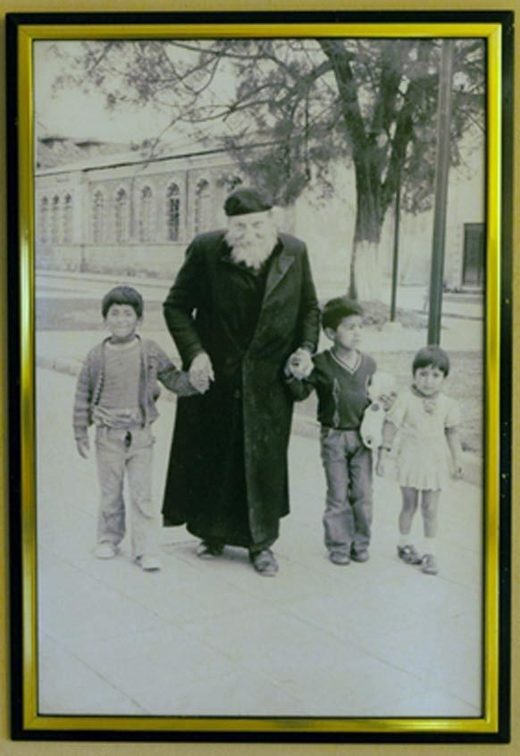
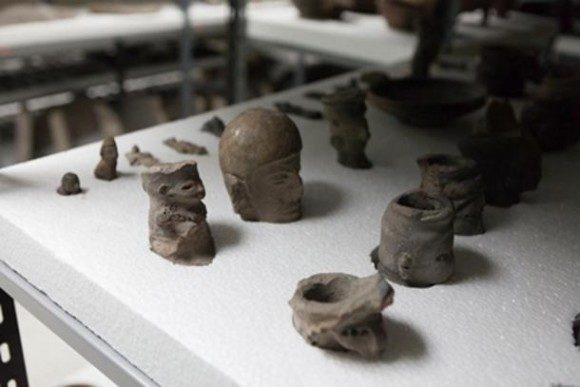
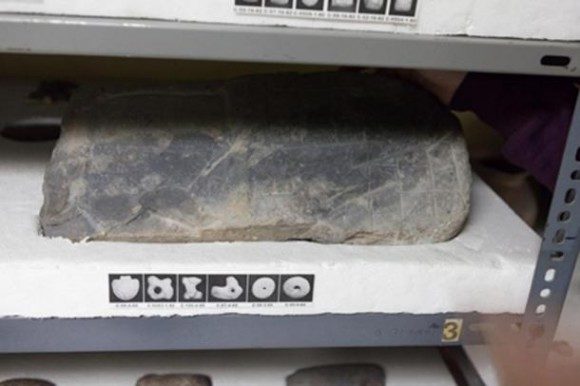
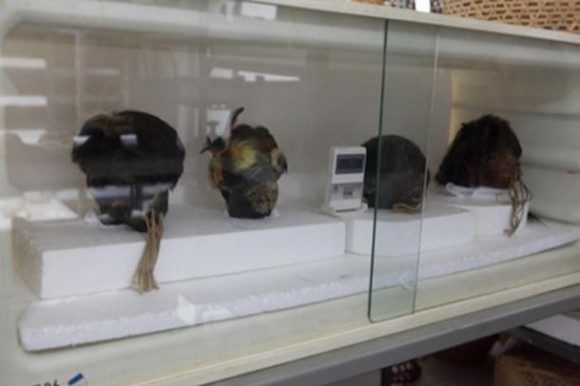
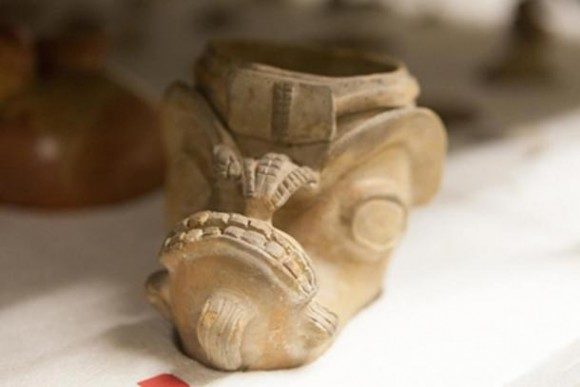
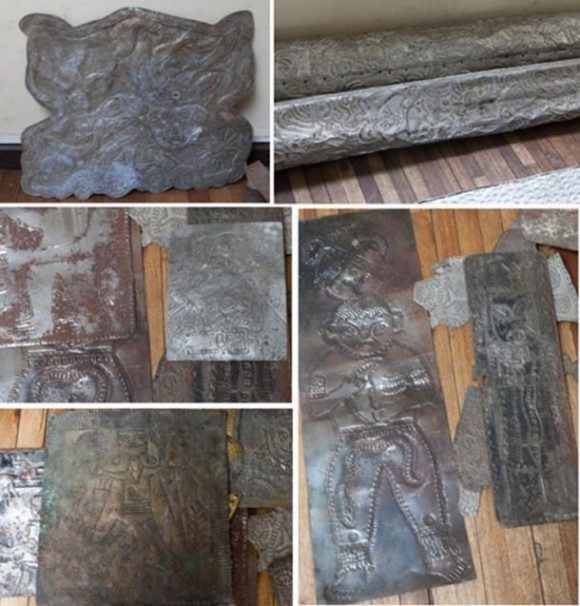



Reader Comments
Psalm 91 (KJV)
1 He that dwelleth in the secret place of the most High shall abide under the shadow of the Almighty.
2 I will say of the Lord, He is my refuge and my fortress: my God; in him will I trust.
3 Surely he shall deliver thee from the snare of the fowler, and from the noisome pestilence.
4 He shall cover thee with his feathers, and under his wings shalt thou trust: his truth shall be thy shield and buckler.
5 Thou shalt not be afraid for the terror by night; nor for the arrow that flieth by day;
6 Nor for the pestilence that walketh in darkness; nor for the destruction that wasteth at noonday.
7 A thousand shall fall at thy side, and ten thousand at thy right hand; but it shall not come nigh thee.
8 Only with thine eyes shalt thou behold and see the reward of the wicked.
9 Because thou hast made the Lord, which is my refuge, even the most High, thy habitation;
10 There shall no evil befall thee, neither shall any plague come nigh thy dwelling.
11 For he shall give his angels charge over thee, to keep thee in all thy ways.
12 They shall bear thee up in their hands, lest thou dash thy foot against a stone.
13 Thou shalt tread upon the lion and adder: the young lion and the dragon shalt thou trample under feet.
14 Because he hath set his love upon me, therefore will I deliver him: I will set him on high, because he hath known my name.
15 He shall call upon me, and I will answer him: I will be with him in trouble; I will deliver him, and honour him.
16 With long life will I satisfy him, and shew him my salvation.
Less than 677 days left boys. I'm counting down. Try again.